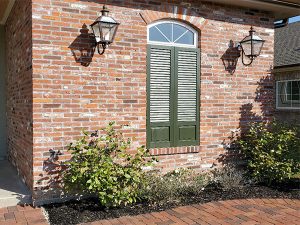2022 Trend Is in Sustainable Buildings
 When you think of homes or commercial buildings you want to have stable construction. Stability is on the top of the priority list of both builders and builder’s customers. Buildings that are constructed with sustainability will have lower maintenance costs, reduce expenditure on utilities and provide their owners with a higher return on their investment.
When you think of homes or commercial buildings you want to have stable construction. Stability is on the top of the priority list of both builders and builder’s customers. Buildings that are constructed with sustainability will have lower maintenance costs, reduce expenditure on utilities and provide their owners with a higher return on their investment.
Brick is a building material that goes back thousands of years when ancient civilizations were constructed with brick. Homes, temples, water canals, streets, and bridges were completely built from brick back then. Brick is a natural, maintenance-free construction material. Brick keeps buildings warm in the winter and cool in the summer but most importantly because of its strength. Brick is impervious to natural disasters and fire.
“Clay brick has superior ‘Life Cycle Assessment,’” Mikaela Insall, who is a certified Leadership in Energy and Environmental Design (LEED) Green Associate and sales engineer for Acme Brick said. “This construction industry metric is an evaluation of the economic performance of a building over its entire life. Using clay brick versus other sidings such as wood or synthetic products will reduce the need for replacement and reduce the use of new materials for reconstruction.
“A clay brick veneer has superior impact resistance and has shown to withstand the impact of a 2×4 board, flying at 72 mph. When you choose clay brick, such as those manufactured by Acme Brick, for your home, you know it will be safe when a high windstorm blows through your neighborhood!”
Battery storage has become a lot better as technology has become more advance. Solar and wind energy have become more mainstream because of these advancements.
“Insulating properties of buildings is very simplistically described by R-value,” Insall notes. “The built environment is subject to more complicated conditions. R-value is defined as the resistance to heat flow in ‘steady state’ conditions and climates are not so steady.
“It’s more important to consider cladding materials that have superior thermal mass benefits. Thermal mass is the material’s capacity to absorb and store heat. Dense materials such as clay brick and concrete have superior thermal mass capabilities.
“If you live in the Southwest and it’s August, you will probably have your AC running, non-stop. During the day, a clay brick wall will slowly heat up, but the temperature on the interior side of the brick wall will never reach the hottest temperature of the day. This is known as the ‘dampening effect’ because it heats up so slowly. When this occurs, a ‘thermal lag’ happens to the structure. The dampening effect and thermal lag are the two components that make up thermal mass.
“Other building materials may be better in ‘steady state’ conditions, but no building material has the superior thermal mass that a clay brick has. This thermal dampening can mean that less powerful air-conditioning (e.g. 2-ton versus 3-ton unit) is needed, saving the homeowner money.”
“Brick homes should last forever, but if reconstruction or additions to a home were to be done and some brick were removed in the process, those brick pieces can simply be used for your landscaping or garden. The brick pieces are an excellent source of minerals for the soil.”
